The Future of Wallets - How Blockchain Technology is Changing the Game
In a world where convenience is king, digital wallets have emerged as the unsung heroes of our financial transactions. Imagine walking into a store, and instead of fumbling for cash or cards, you simply tap your phone and voilà—your purchase is complete! This shift is not just a trend; it's a transformation driven by blockchain technology. As we dive into this topic, we will explore how blockchain is revolutionizing the way we think about wallets, making them more secure, efficient, and user-friendly. The future of wallets is not just about carrying money; it's about carrying trust, security, and a seamless experience.
Let’s face it, carrying cash is becoming a thing of the past. With the rise of digital wallets, consumers are now managing their finances at the tip of their fingers. Digital wallets have gained popularity due to their convenience and security, revolutionizing how consumers make transactions in an increasingly cashless society. Imagine being able to pay for groceries, transfer money to friends, and even manage your investments—all from a single app on your smartphone. This convenience is driving a significant shift in consumer behavior, as more people embrace the ease of digital transactions over traditional methods.
At the heart of this digital wallet revolution lies blockchain technology. It serves as the backbone for these wallets, providing a decentralized and secure way to store and transfer value without relying on traditional financial institutions. Think of blockchain as a digital ledger that records transactions across many computers in such a way that the registered transactions cannot be altered retroactively. This ensures that the data is not only transparent but also secure. As we delve deeper into the features of blockchain, we’ll see why it’s a game-changer for digital wallets.
Blockchain's key features, including transparency, immutability, and security, make it an ideal solution for enhancing the functionality and trustworthiness of digital wallets. For instance, every transaction made through a blockchain wallet is recorded on a public ledger, which can be viewed by anyone but cannot be changed. This transparency builds trust among users and reduces the likelihood of fraud. Moreover, the immutability of blockchain means that once a transaction is recorded, it cannot be altered, providing an additional layer of security that traditional methods can't match.
One of the most significant advantages of blockchain technology is its decentralization. Unlike traditional banking systems that require intermediaries, blockchain eliminates the need for these middlemen. This not only reduces transaction costs but also increases efficiency, making it particularly beneficial for digital wallet users. Imagine sending money to a friend overseas without paying hefty fees to a bank or waiting days for the transfer to clear. With blockchain, these transactions can happen almost instantly and at a fraction of the cost.
When it comes to financial transactions, security is paramount. Blockchain’s cryptographic security measures protect user data and transaction integrity, making digital wallets safer than conventional methods of storing and managing funds. Each transaction is encrypted and linked to the previous transaction, creating a secure chain that is incredibly difficult to tamper with. This level of security is crucial in a world where cyber threats are rampant and trust in financial systems is increasingly questioned.
Another exciting development in the realm of digital wallets is the integration of smart contracts. These are self-executing contracts with the terms of the agreement directly written into code. They enable automated transactions, which means that conditions can be met without the need for human intervention. For instance, if you’re renting an apartment, a smart contract can automatically release funds to the landlord once you’ve moved in, streamlining the entire process. This not only enhances the user experience but also reduces the chances of disputes.
Despite their many advantages, blockchain wallets are not without their challenges. Issues such as scalability, regulatory hurdles, and user adoption need to be addressed for widespread acceptance. As more people begin to use blockchain wallets, the networks must be able to handle increased transaction volumes without compromising speed or cost.
Scalability remains a significant concern for blockchain networks. As the number of transactions increases, it can lead to slower processing times and higher fees for wallet users. This is akin to a highway jam—when too many cars are on the road, everyone moves slowly. Solutions are being developed, but until then, scalability will continue to be a hot topic in the blockchain community.
The regulatory landscape surrounding cryptocurrencies and blockchain technology is constantly evolving. This poses challenges for wallet providers, who must navigate compliance while maintaining user privacy and security. Striking a balance between innovation and regulation is crucial for the long-term success of blockchain wallets. As governments around the world grapple with how to regulate this new technology, the future remains uncertain.
As blockchain technology continues to evolve, the future of digital wallets looks promising. Innovations are on the horizon that could enhance user experience, security, and integration with other financial services. Imagine a world where your digital wallet seamlessly interacts with your bank account, investment portfolio, and even your social media accounts, providing a holistic view of your finances.
The potential for digital wallets to integrate with traditional banking systems could create a more seamless financial experience for users. This integration could bridge the gap between old and new financial paradigms, allowing users to enjoy the best of both worlds. Picture being able to transfer funds from your bank to your digital wallet in real-time, or using your digital wallet to pay bills directly from your bank account.
Emerging trends like decentralized finance (DeFi) and non-fungible tokens (NFTs) are likely to shape the future of digital wallets. DeFi allows users to lend, borrow, and earn interest on their crypto assets without traditional banks, while NFTs are changing how we think about ownership and value. These trends are creating new functionalities and opportunities for users, making digital wallets more versatile than ever.
Q: What is a digital wallet?
A: A digital wallet is a software application that allows users to store, send, and receive digital currency and other financial assets.
Q: How does blockchain enhance digital wallets?
A: Blockchain provides a secure, transparent, and decentralized framework for transactions, making digital wallets safer and more efficient.
Q: What are smart contracts?
A: Smart contracts are self-executing contracts with the terms directly written into code, allowing for automated transactions without intermediaries.
Q: What challenges do blockchain wallets face?
A: Challenges include scalability issues, regulatory hurdles, and the need for broader user adoption.
Q: What does the future hold for digital wallets?
A: The future looks bright, with potential integrations with traditional banking, and emerging trends like DeFi and NFTs shaping the landscape.
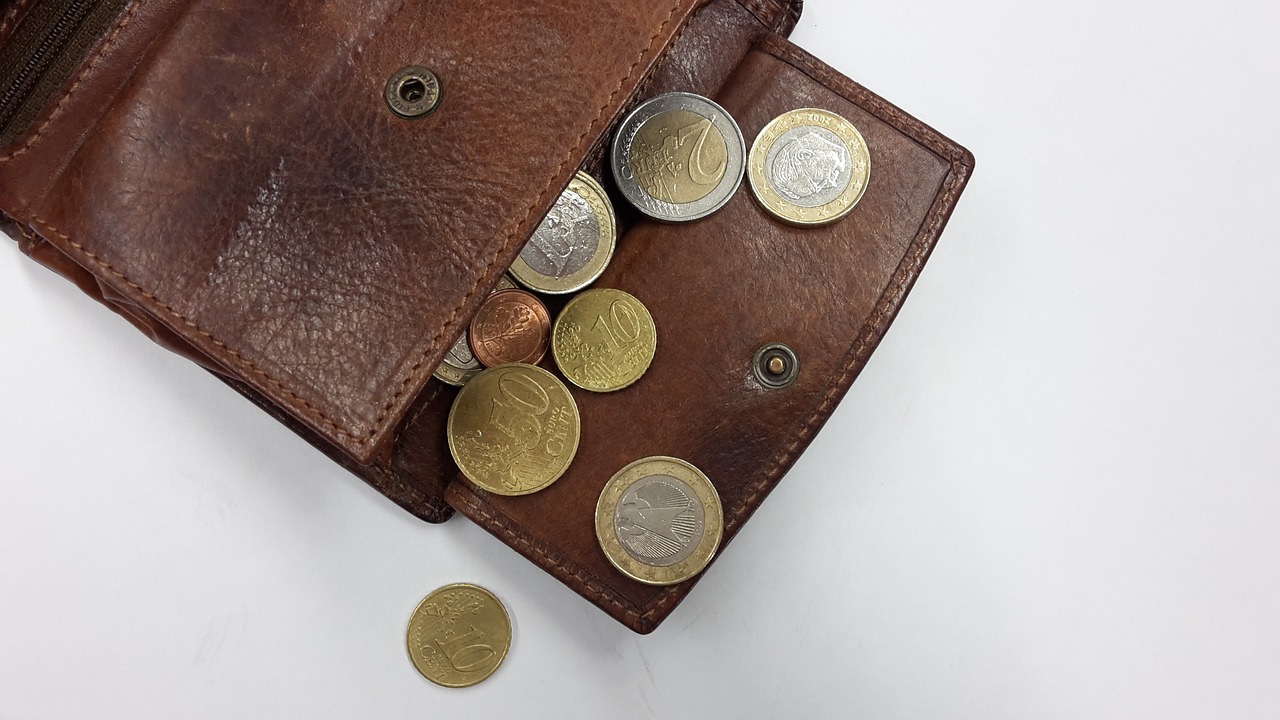
The Rise of Digital Wallets
This article explores the transformative impact of blockchain technology on digital wallets, examining its benefits, challenges, and future trends in the financial landscape.
In recent years, digital wallets have surged in popularity, becoming a fundamental part of our daily financial interactions. These virtual wallets allow users to store, send, and receive money with just a few taps on their smartphones, making transactions faster and more convenient than ever before. Imagine walking into a store and paying for your coffee with a simple scan of your phone—no cash, no cards, just a seamless experience. This shift towards a cashless society has been fueled by the growing need for security and ease of use in financial transactions.
One of the most significant drivers behind the rise of digital wallets is the increasing reliance on technology in our everyday lives. With the advent of smartphones and high-speed internet, people are now more connected than ever. This connectivity has paved the way for a range of digital payment solutions that cater to the needs of modern consumers. According to a recent study, over 2 billion people worldwide are expected to use digital wallets by 2025, highlighting the immense growth potential in this sector.
Furthermore, the COVID-19 pandemic accelerated the shift towards digital payments as consumers and businesses sought contactless solutions to minimize physical interactions. Many people who were once hesitant to adopt digital wallets found themselves exploring these options out of necessity. This trend is not just a temporary response to a crisis; it's a fundamental change in how we view money and transactions.
Digital wallets also offer a variety of features that enhance user experience. For instance, they often come with built-in budgeting tools, transaction tracking, and rewards programs that encourage spending and saving. Users can easily monitor their expenses, set financial goals, and receive notifications about their spending habits. This level of control and insight was previously difficult to achieve with traditional banking methods.
Moreover, digital wallets are not just limited to storing cash; they can also hold loyalty cards, gift cards, and even cryptocurrencies. This versatility makes them an all-in-one solution for managing finances, catering to a wide range of user needs. As consumers continue to seek convenience and efficiency, digital wallets are poised to become even more integral to our financial ecosystems.
However, it’s essential to recognize that the rise of digital wallets is not without its challenges. Issues such as security concerns, the need for reliable internet access, and the digital divide must be addressed to ensure that everyone can benefit from this technology. As we navigate this rapidly evolving landscape, it's crucial to remain vigilant about the potential risks while embracing the opportunities that digital wallets present.
- What is a digital wallet? A digital wallet is an electronic device or online service that allows individuals to make electronic transactions and store payment information securely.
- How do digital wallets work? Digital wallets store your payment information and allow you to make transactions by connecting to your bank account or credit card, often using mobile apps.
- Are digital wallets safe? Yes, digital wallets use advanced security measures such as encryption and two-factor authentication to protect user data and transactions.
- Can I use a digital wallet for cryptocurrencies? Yes, many digital wallets support cryptocurrencies, allowing users to store, send, and receive digital currencies.
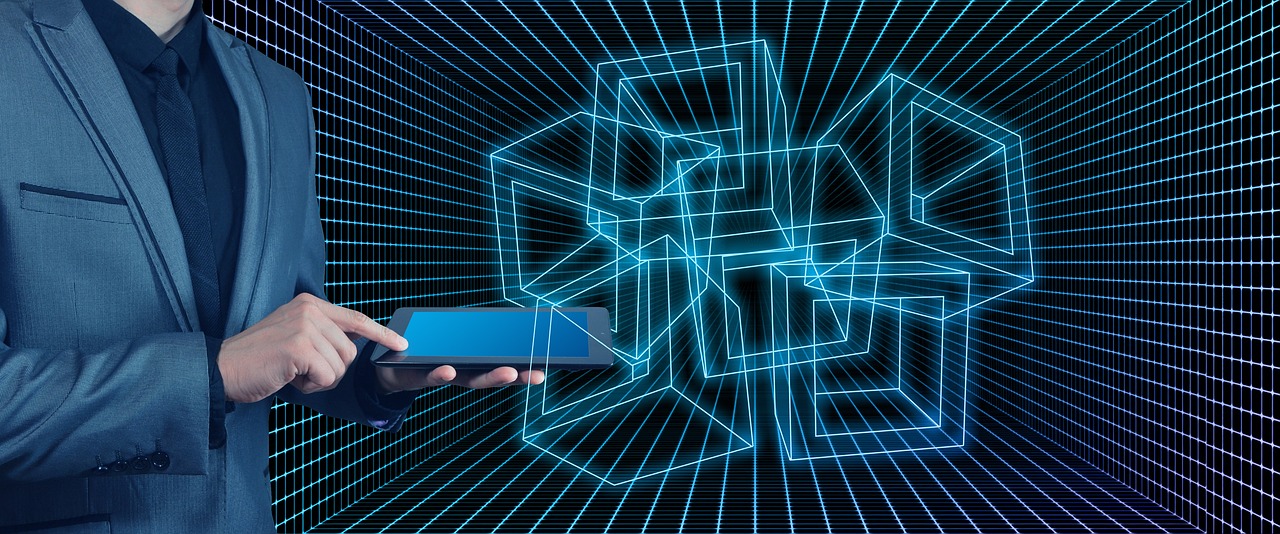
Understanding Blockchain Technology
When we talk about blockchain technology, we're diving into a world that’s fundamentally reshaping the way we think about transactions and data management. At its core, blockchain is a decentralized ledger that records transactions across many computers in such a way that the registered transactions cannot be altered retroactively. This means that once information is entered into the blockchain, it becomes a permanent part of the record, creating a level of trust and transparency that traditional systems simply can’t match.
Imagine a giant digital notebook that everyone can see but no one can erase. When a transaction is made, it’s written in this notebook and everyone involved has a copy. This process not only enhances security but also ensures that all parties have access to the same information, which reduces the chances of fraud. In a world where trust is often hard to come by, blockchain technology offers a refreshing solution.
One of the most exciting aspects of blockchain is its key features, which include:
- Transparency: All transactions are visible to participants and are recorded in a public ledger.
- Immutability: Once data is recorded, it cannot be changed or deleted, ensuring the integrity of the information.
- Security: Cryptographic techniques protect data, making it extremely difficult for unauthorized users to alter or hack the information.
Let’s take a closer look at these features. The transparency of blockchain means that anyone can verify transactions, which is a game-changer for industries that require accountability, like finance and supply chain management. The immutability ensures that once a transaction is confirmed, it’s set in stone, which can eliminate disputes and fraud. Lastly, the security provided by blockchain’s cryptographic measures protects sensitive data, making it a preferred choice for digital wallets.
One of the standout characteristics of blockchain technology is decentralization. Unlike traditional financial systems that rely on a central authority, blockchain operates on a network of computers, or nodes, that work together to validate transactions. This means that no single entity has control over the entire network, which significantly reduces the risk of corruption and fraud.
Decentralization also leads to lower transaction costs. Without intermediaries, users can send and receive funds directly, which not only speeds up the process but also makes it more affordable. Think of it as cutting out the middleman in a business deal; you get to keep more of your money and have a smoother transaction experience.
Now, let’s talk about security measures. Blockchain employs advanced cryptographic techniques to ensure that data is protected from unauthorized access. Each transaction is encrypted and linked to the previous transaction, forming a chain of blocks that is virtually impossible to tamper with. This level of security is particularly appealing for digital wallets, where users store sensitive financial information.
To illustrate this, let’s consider a simple table comparing traditional banking security with blockchain security:
| Feature | Traditional Banking | Blockchain Technology |
|---|---|---|
| Control | Centralized | Decentralized |
| Transaction Speed | Can be slow (days) | Fast (minutes) |
| Fraud Risk | Higher | Lower |
| Data Modification | Possible | Not possible |
As you can see, blockchain technology offers significant advantages over traditional banking methods, particularly in terms of security and efficiency. This is why many digital wallets are now leveraging blockchain to provide users with a safer and more reliable way to manage their finances.
In conclusion, understanding blockchain technology is crucial for anyone looking to navigate the future of digital wallets. With its unique features like decentralization, security, and transparency, blockchain is not just a trend; it’s a revolution that is changing the very fabric of financial transactions.
Q1: What is blockchain technology?
A1: Blockchain is a decentralized digital ledger that records transactions across multiple computers, ensuring that the recorded transactions cannot be altered retroactively.
Q2: How does blockchain enhance security in digital wallets?
A2: Blockchain employs cryptographic techniques to protect data and ensure that transactions are secure and immutable, making it difficult for unauthorized users to alter information.
Q3: What are the benefits of decentralization in blockchain?
A3: Decentralization reduces the need for intermediaries, lowers transaction costs, and enhances the overall efficiency of transactions.
Q4: What challenges do blockchain wallets face?
A4: Challenges include scalability issues, regulatory concerns, and the need for greater user adoption to ensure widespread acceptance.

Key Features of Blockchain
Blockchain technology is not just a buzzword; it’s a revolutionary framework that underpins the digital economy. At its core, blockchain offers several key features that distinguish it from traditional systems, making it an ideal choice for enhancing digital wallets. Let's dive into these features and explore how they contribute to the overall functionality and trustworthiness of blockchain-based wallets.
First and foremost, one of the most compelling aspects of blockchain is its transparency. Every transaction recorded on a blockchain is visible to all participants in the network. This level of visibility not only fosters trust among users but also allows for easy verification of transactions. Imagine a public ledger where every entry is permanent and cannot be altered; this is what blockchain offers. Users can feel confident knowing that their transactions are recorded accurately and can be audited at any time.
Next up is immutability. Once a transaction is added to the blockchain, it becomes nearly impossible to change or delete it. This characteristic is crucial for digital wallets, as it ensures that once funds are transferred, they cannot be tampered with. Think of it like writing something in stone; it’s there forever. This feature protects users from fraud and enhances the overall security of their financial transactions.
Additionally, the security measures inherent in blockchain technology are a game-changer. Utilizing advanced cryptographic techniques, blockchain ensures that user data and transaction information are safeguarded from unauthorized access. Each transaction is encrypted and linked to the previous one, forming a chain of blocks that is incredibly difficult to break. This level of security is akin to having a vault that not only protects your valuables but also ensures that no one can access them without your permission.
Another significant feature is decentralization. Unlike traditional financial systems that rely on centralized authorities, blockchain operates on a distributed network of nodes. This means that no single entity has control over the entire system, reducing the risk of fraud and corruption. For users of digital wallets, this decentralization translates to lower transaction costs and increased efficiency. Instead of waiting for a bank to process your transaction, blockchain allows for near-instantaneous transfers, making the whole experience smoother and more enjoyable.
Finally, blockchain's capability to support smart contracts adds another layer of functionality. These self-executing contracts automatically enforce and execute the terms of an agreement when predefined conditions are met. Imagine setting up a deal that executes itself without the need for a middleman; that’s the power of smart contracts. For digital wallet users, this means streamlined transactions and reduced costs, as there’s no need for intermediaries to facilitate the process.
In summary, the key features of blockchain—transparency, immutability, security, decentralization, and smart contracts—combine to create a robust framework that enhances the functionality and trustworthiness of digital wallets. As we move further into the digital age, these characteristics will undoubtedly play a vital role in shaping the future of financial transactions.
- What is blockchain technology? Blockchain is a decentralized digital ledger that records transactions across many computers in a way that the registered transactions cannot be altered retroactively.
- How does blockchain ensure security? Blockchain uses cryptographic techniques to secure data, making it difficult for unauthorized users to access or alter transaction information.
- What are smart contracts? Smart contracts are self-executing contracts with the terms of the agreement directly written into code, allowing for automated transactions without the need for intermediaries.
- Why are digital wallets important? Digital wallets provide a convenient and secure way for users to store and manage their cryptocurrencies and other digital assets.

Decentralization
Decentralization is at the heart of blockchain technology, and it fundamentally changes how we think about financial transactions and digital wallets. Unlike traditional banking systems that rely on a central authority to manage and oversee transactions, blockchain operates on a peer-to-peer network. This means that transactions occur directly between users without the need for intermediaries, such as banks or payment processors. Imagine trying to send money to a friend without having to go through a bank; that’s the essence of decentralization!
One of the most significant benefits of decentralization is the reduction in transaction costs. When you eliminate the middleman, you often cut out hefty fees associated with processing transactions. This is particularly appealing for users who frequently send money across borders, where traditional services can charge exorbitant fees. Moreover, decentralization enhances transaction speed. With blockchain, transactions can be processed almost instantly, allowing users to send and receive funds in real-time.
However, decentralization isn’t just about cost and speed; it also brings a level of trust and transparency that traditional systems often lack. In a decentralized network, every transaction is recorded on a public ledger that anyone can access and verify. This transparency ensures that all parties involved can trust the integrity of the transaction without relying on a central authority. It’s like having a giant digital book that everyone can see but no one can alter, making fraud nearly impossible.
Despite these advantages, decentralization does come with its challenges. For instance, the absence of a central authority means that users are responsible for their own security. If you lose access to your digital wallet, there’s no bank to call for help. This aspect of decentralization requires users to be more vigilant and informed about managing their digital assets. Additionally, while decentralization promotes freedom, it can also lead to regulatory challenges, as governments struggle to keep pace with the rapid innovations in blockchain technology.
In summary, decentralization is a game-changer for digital wallets and the financial landscape as a whole. It empowers users, promotes transparency, and reduces costs, all while presenting new challenges that must be navigated. As we move forward, understanding the implications of decentralization will be crucial for anyone looking to participate in the evolving world of digital finance.
- What is decentralization in blockchain?
Decentralization in blockchain refers to the distribution of control and authority across a network, allowing transactions to occur directly between users without a central authority.
- How does decentralization benefit users?
Decentralization reduces transaction costs, increases speed, and enhances transparency, allowing users to have more control over their financial transactions.
- What are the risks associated with decentralization?
Users face risks such as loss of access to their digital wallets and the challenge of navigating regulatory environments without a central authority to assist them.
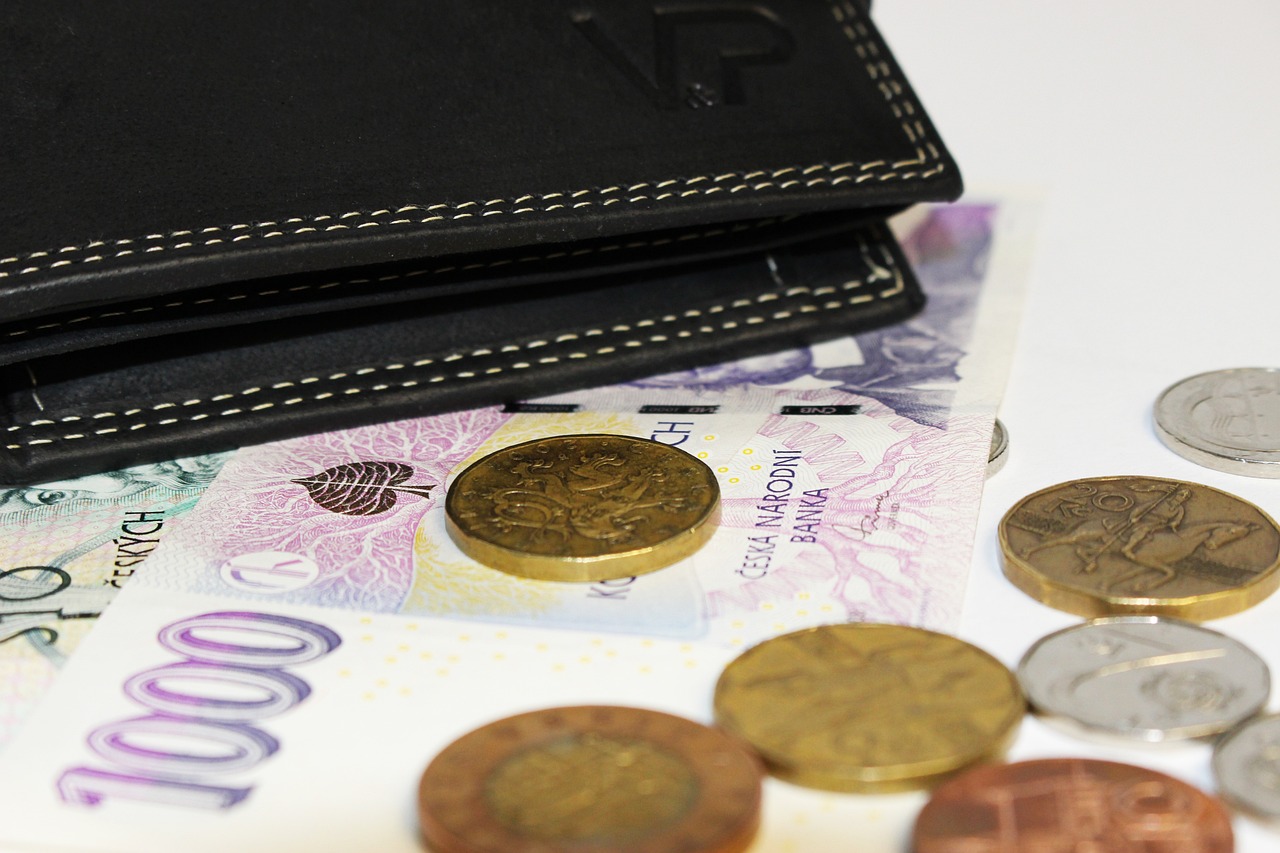
Security Measures
When it comes to digital wallets, security is not just an option; it's a necessity. In a world where cyber threats loom large, the implementation of robust security measures within blockchain technology is crucial for protecting user data and ensuring the integrity of transactions. Blockchain's unique architecture offers several layers of security that traditional financial systems simply cannot match.
One of the most significant features of blockchain technology is its use of cryptographic algorithms. These algorithms encrypt transaction data, making it nearly impossible for unauthorized users to access or alter this information. Each transaction is linked to the previous one through a cryptographic hash, creating a secure chain of data that is incredibly resilient against tampering. This means that once a transaction is recorded on the blockchain, it cannot be changed or deleted, ensuring a high level of immutability.
Moreover, the decentralized nature of blockchain eliminates the risks associated with centralized data storage. In traditional systems, a single point of failure can lead to massive data breaches, but with blockchain, data is distributed across a network of nodes. Each node maintains a copy of the entire blockchain, which means that even if one node is compromised, the integrity of the overall system remains intact. This decentralization not only enhances security but also builds trust among users, as they can verify transactions independently.
In addition to cryptographic security and decentralization, blockchain wallets often employ multi-signature (multisig) technology. This feature requires multiple private keys to authorize a transaction, adding an extra layer of protection. For instance, a user might need to provide two out of three keys to complete a transaction, significantly reducing the risk of unauthorized access. This is particularly beneficial for businesses and individuals who manage larger sums of cryptocurrency, as it mitigates the impact of a lost or stolen key.
Furthermore, many blockchain wallets incorporate two-factor authentication (2FA). This requires users to provide two forms of identification before accessing their wallet. Common methods include a password and a one-time code sent to a mobile device. By employing 2FA, users can add a critical barrier against potential hackers who may have obtained their passwords but lack access to their secondary authentication method.
Despite these advanced security measures, users must also take personal responsibility for their digital assets. Utilizing strong, unique passwords, regularly updating them, and being cautious about phishing attempts are essential practices for safeguarding one's wallet. Ultimately, while blockchain technology provides a robust framework for security, the user's vigilance plays a pivotal role in protecting their financial information.
- What is a digital wallet? A digital wallet is an electronic device or online service that allows individuals to store and manage their payment information, making it easier to conduct transactions.
- How does blockchain enhance security in digital wallets? Blockchain enhances security through cryptographic algorithms, decentralization, and features like multi-signature and two-factor authentication.
- Are digital wallets safe to use? Yes, digital wallets are generally safe, especially those that implement robust security measures. However, users must also practice good security hygiene.
- What should I do if I lose access to my digital wallet? If you lose access, check if your wallet has recovery options. Always back up your recovery phrases and keys in a secure location.

Smart Contracts and Wallets
Imagine a world where transactions are not only secure but also automated, where contracts execute themselves without the need for a middleman. This is the magic of smart contracts, and they are fundamentally changing the way we interact with digital wallets. Smart contracts are self-executing contracts with the terms of the agreement directly written into code. They run on blockchain technology, ensuring that once conditions are met, the contract is executed without any human intervention.
So, how do smart contracts enhance the functionality of digital wallets? For starters, they streamline transactions. Let’s say you want to purchase a digital asset. Instead of going through multiple steps and intermediaries, a smart contract can automatically transfer ownership once payment is confirmed. This not only saves time but also reduces the risk of fraud, as the transaction is recorded on the blockchain and cannot be altered.
Furthermore, smart contracts can be programmed to handle various financial applications within digital wallets. For instance, they can facilitate loans, insurance claims, and even real estate transactions. Imagine a scenario where a smart contract manages a rental agreement: the contract could automatically release funds from the tenant's wallet to the landlord upon successful completion of a rental term, ensuring both parties fulfill their obligations without any hassle.
Let’s take a closer look at some key benefits of integrating smart contracts with digital wallets:
- Efficiency: By automating processes, smart contracts eliminate the need for manual oversight, allowing users to complete transactions faster.
- Cost-Effectiveness: Reducing the number of intermediaries involved in transactions can significantly lower costs for users.
- Transparency: All parties have access to the same information, which builds trust and accountability.
- Security: The decentralized nature of blockchain ensures that transactions are secure and tamper-proof.
Despite these advantages, it’s important to recognize that the implementation of smart contracts comes with its own set of challenges. For example, the code must be flawless; any bugs or vulnerabilities can lead to unintended consequences. Additionally, legal recognition of smart contracts varies by jurisdiction, which can complicate their adoption in certain regions.
In conclusion, the integration of smart contracts within digital wallets not only enhances user experience but also paves the way for innovative financial solutions. As more users become aware of these benefits, we can expect to see an increase in the adoption of smart contracts, ultimately leading to a more efficient and secure financial ecosystem.
Q1: What are smart contracts?
A1: Smart contracts are self-executing contracts with the terms directly written into code, allowing transactions to be automated without intermediaries.
Q2: How do smart contracts improve digital wallets?
A2: They streamline transactions, reduce costs, enhance security, and increase transparency by automating processes.
Q3: Are smart contracts secure?
A3: Yes, they are secure due to their operation on blockchain technology, which ensures that transactions are tamper-proof.
Q4: What challenges do smart contracts face?
A4: Challenges include potential coding errors, varying legal recognition, and the need for user education regarding their use.

Challenges Facing Blockchain Wallets
Despite the remarkable advantages that blockchain wallets bring to the table, they are not without their challenges. As the digital landscape evolves, so too do the hurdles that these wallets must overcome to achieve widespread adoption. One of the most pressing issues is scalability. As more users flock to blockchain networks, the increased transaction volume can lead to significant slowdowns. Imagine trying to drive on a highway during rush hour; the more cars there are, the longer it takes to reach your destination. Similarly, when blockchain networks become congested, transaction times increase, and fees can skyrocket, which can deter users from utilizing these wallets.
Another significant challenge is the regulatory landscape. Governments around the world are still grappling with how to regulate cryptocurrencies and blockchain technologies. This uncertainty creates a precarious environment for wallet providers who must navigate compliance while ensuring user privacy and security. It’s like walking a tightrope; one misstep could lead to regulatory backlash that could jeopardize the entire operation. Wallet providers need to stay updated on changing regulations, which can vary dramatically from one jurisdiction to another.
Moreover, user adoption remains a critical challenge. While blockchain technology is revolutionary, many consumers are still hesitant to embrace it. This reluctance often stems from a lack of understanding or fear of the unknown. To put it simply, if you’ve never ridden a bike, the thought of balancing on two wheels can be daunting. Similarly, potential users may find it challenging to trust a technology that seems complicated and foreign.
To illustrate these challenges further, let’s take a look at a table summarizing the key issues facing blockchain wallets:
| Challenge | Description |
|---|---|
| Scalability | Increased transaction volume can lead to slower processing times and higher fees. |
| Regulatory Landscape | Uncertain regulations create compliance challenges for wallet providers. |
| User Adoption | Many potential users are hesitant to embrace blockchain technology due to fear and lack of understanding. |
As we can see, these challenges are not merely technical; they also encompass regulatory and societal dimensions. Addressing these issues is crucial for the future growth and acceptance of blockchain wallets. The industry must work collaboratively to develop solutions that can alleviate these concerns, paving the way for a more robust and user-friendly digital wallet ecosystem.
- What are blockchain wallets?
Blockchain wallets are digital tools that allow users to store and manage their cryptocurrencies securely. - How do blockchain wallets ensure security?
They utilize advanced cryptographic techniques to secure user data and transaction integrity. - What are the main challenges facing blockchain wallets?
The main challenges include scalability, regulatory issues, and user adoption. - Can blockchain wallets integrate with traditional banking?
Yes, there is potential for integration, which could enhance user experience and bridge the gap between traditional and digital finance.

Scalability Issues
When we talk about scalability in the context of blockchain wallets, we're diving into one of the most pressing challenges that this technology faces today. As more people embrace digital wallets and the volume of transactions increases, the underlying blockchain networks can become congested. Imagine a busy highway during rush hour; when too many cars are on the road, traffic slows down, and the same principle applies to blockchain transactions. If the network can't handle the load, users may experience delays, higher fees, and even failed transactions, which can be incredibly frustrating.
One of the primary reasons for these scalability issues is the design of many popular blockchain networks. For instance, Bitcoin and Ethereum, two of the most widely used cryptocurrencies, can only process a limited number of transactions per second. To illustrate this, let’s look at a simple comparison:
| Blockchain | Transactions per Second (TPS) |
|---|---|
| Bitcoin | 7 TPS |
| Ethereum | 30 TPS |
| Visa | 24,000 TPS |
This table highlights a stark contrast between traditional payment systems like Visa, which can process thousands of transactions per second, and blockchain networks that lag significantly behind. As a result, when the demand for transactions surges—say during a market rally or a major event—users may face long wait times and inflated transaction fees. This situation can deter new users from adopting blockchain wallets, as no one wants to deal with a sluggish system when they're trying to make quick transactions.
Moreover, scalability isn't just about speed; it's also about the cost of transactions. As the network becomes congested, miners and validators prioritize transactions with higher fees, leaving those who are unwilling or unable to pay more waiting in the queue. This creates a two-tier system where wealthier users can enjoy faster services while others are left behind, which contradicts the very essence of blockchain technology—decentralization and inclusivity.
To tackle these scalability challenges, various solutions are being explored. Some of these include:
- Layer 2 Solutions: Technologies like the Lightning Network for Bitcoin or rollups for Ethereum aim to process transactions off the main blockchain, significantly increasing throughput.
- Sharding: This technique involves breaking the blockchain into smaller, more manageable pieces, allowing for parallel processing of transactions.
- New Consensus Mechanisms: Innovations like Proof of Stake (PoS) are being considered to improve transaction speeds and reduce energy consumption compared to traditional Proof of Work (PoW) systems.
While these solutions show promise, they also come with their own sets of challenges and trade-offs. The road to scalability is complex, and as the blockchain ecosystem continues to evolve, finding the right balance between speed, cost, and security will be crucial for the future of digital wallets.
- What is blockchain scalability?
Blockchain scalability refers to the ability of a blockchain network to handle an increasing number of transactions efficiently without compromising speed or cost. - Why is scalability important for digital wallets?
Scalability is crucial for digital wallets because it ensures smooth transactions, user satisfaction, and broader adoption of blockchain technology. - What are some solutions to scalability issues?
Solutions include Layer 2 technologies, sharding, and new consensus mechanisms like Proof of Stake.

Regulatory Landscape
The regulatory landscape surrounding blockchain technology and digital wallets is as dynamic as the technology itself. As more users embrace digital wallets, governments and regulatory bodies worldwide are scrambling to catch up, crafting laws that can keep pace with this rapidly evolving sector. The challenge lies in striking a balance between fostering innovation and ensuring consumer protection. Imagine a game of chess where each move can change the entire strategy; that's how regulators are feeling as they navigate this complex environment.
One of the primary concerns for regulators is the potential for fraud and money laundering. With the anonymity that blockchain can provide, it becomes easier for bad actors to exploit these systems. To counter this, many jurisdictions are implementing Know Your Customer (KYC) and Anti-Money Laundering (AML) regulations. These regulations require wallet providers to verify the identity of their users, which can help mitigate risks but may also deter some users who value privacy.
In addition to KYC and AML, regulatory frameworks vary significantly across different regions. For instance, the European Union is working on a comprehensive regulatory framework known as the Markets in Crypto-Assets (MiCA) regulation, which aims to create a unified approach to cryptocurrency regulation across member states. On the other hand, countries like China have taken a more restrictive stance, outright banning cryptocurrency transactions and initial coin offerings (ICOs).
To illustrate the differences in regulatory approaches, consider the following table:
| Region | Regulatory Approach |
|---|---|
| United States | Mixed; various states have different regulations, while federal agencies are still defining their stance. |
| European Union | Developing comprehensive regulations (MiCA) to unify the approach across member states. |
| China | Restrictive; bans cryptocurrency transactions and ICOs. |
| Australia | Progressive; working towards integrating blockchain technology within existing financial regulations. |
As we look toward the future, it's clear that the regulatory landscape will continue to evolve. The key will be for regulators to stay informed about technological advancements and to engage with industry stakeholders. This collaboration can lead to regulations that not only protect consumers but also encourage innovation. It’s like building a bridge; both sides need to work together to ensure it’s sturdy enough to support the flow of traffic while allowing for smooth passage.
In conclusion, the regulatory landscape for blockchain wallets is complex and varies significantly from one region to another. As the technology matures, so too will the regulations governing it. The ongoing dialogue between regulators and innovators will be crucial in shaping a balanced framework that promotes growth while ensuring safety and compliance.
- What are digital wallets? Digital wallets are electronic devices or online services that allow individuals to make electronic transactions, store payment information, and manage their finances securely.
- How does blockchain enhance digital wallets? Blockchain technology provides a decentralized and secure framework for transactions, ensuring data integrity and reducing the risk of fraud.
- What are the main challenges facing blockchain wallets? Key challenges include scalability, regulatory compliance, and user adoption, which must be addressed for broader acceptance.
- Are digital wallets safe to use? Yes, when implemented correctly, digital wallets can offer a high level of security through encryption and blockchain technology.
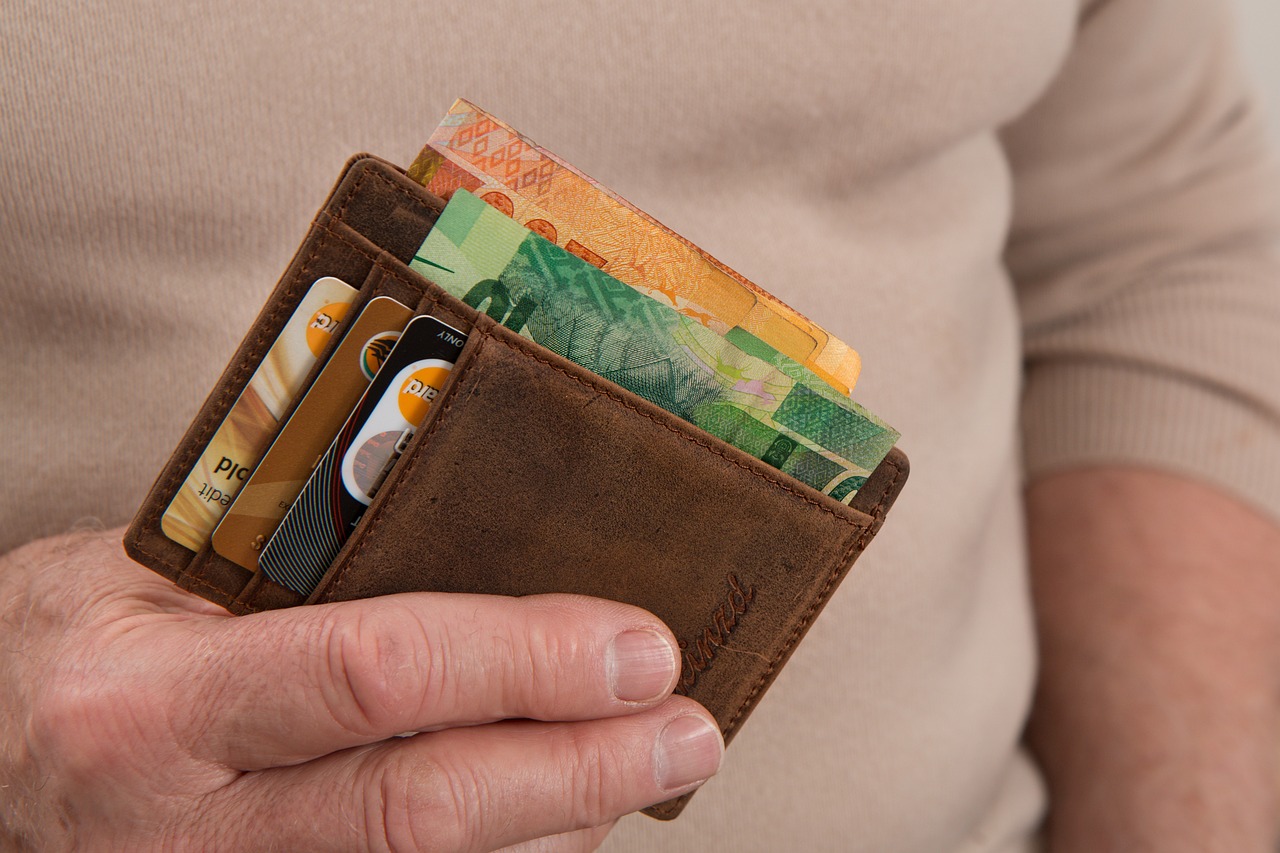
The Future of Wallets
As we look ahead, the future of digital wallets is not just bright; it's positively dazzling! With the relentless evolution of blockchain technology, we are on the brink of a financial revolution that promises to redefine how we manage our money. Imagine a world where your wallet is not just a place to store your cash or cards but a powerful tool that seamlessly integrates with every aspect of your financial life. This is not merely a dream; it's becoming a reality.
One of the most exciting prospects is the integration of digital wallets with traditional banking systems. This convergence could pave the way for a more cohesive financial ecosystem. Picture this: you wake up in the morning, check your bank balance through your digital wallet, pay your bills, and even make investments—all from the same interface. This could significantly simplify our financial interactions, making it easier for users to manage their money without hopping between apps and platforms.
Moreover, the rise of decentralized finance (DeFi) and non-fungible tokens (NFTs) is set to shape the future of digital wallets. These innovations are not just buzzwords; they represent groundbreaking changes in how we perceive ownership and value. For instance, with DeFi, users can lend, borrow, and earn interest on their crypto assets directly from their wallets, eliminating the need for intermediaries. Similarly, NFTs could allow users to store and trade unique digital assets directly through their wallets, creating new markets and opportunities.
However, as thrilling as these developments are, they come with their own set of challenges. The regulatory landscape is evolving, and wallet providers will need to navigate compliance while ensuring user privacy and security. This balancing act is crucial as it can either bolster or hinder the growth of digital wallets. The need for regulatory clarity is more pressing than ever, as it will determine how quickly these innovations can be adopted by the masses.
In addition, user adoption remains a key factor. While tech-savvy individuals might embrace these changes, the average consumer may feel overwhelmed. Therefore, wallet providers must focus on creating intuitive interfaces and educational resources to help users understand and trust these new technologies. A user-friendly experience is essential for driving widespread acceptance and ensuring that digital wallets become a staple in everyday financial transactions.
In summary, the future of digital wallets is poised for transformation, driven by advancements in blockchain technology and innovative financial solutions. As we continue to witness these changes, it’s crucial for both consumers and providers to stay informed and adaptable. The journey is just beginning, and the possibilities are endless!
- What are digital wallets? Digital wallets are applications or devices that allow users to store and manage their payment information, making transactions easier and more secure.
- How does blockchain enhance digital wallets? Blockchain provides a decentralized and secure framework for transactions, ensuring transparency and protecting user data.
- What challenges do blockchain wallets face? Key challenges include scalability, regulatory compliance, and the need for greater user adoption.
- Will digital wallets replace traditional banking? While they may not fully replace traditional banking, digital wallets will likely complement and integrate with banking services for a more seamless financial experience.
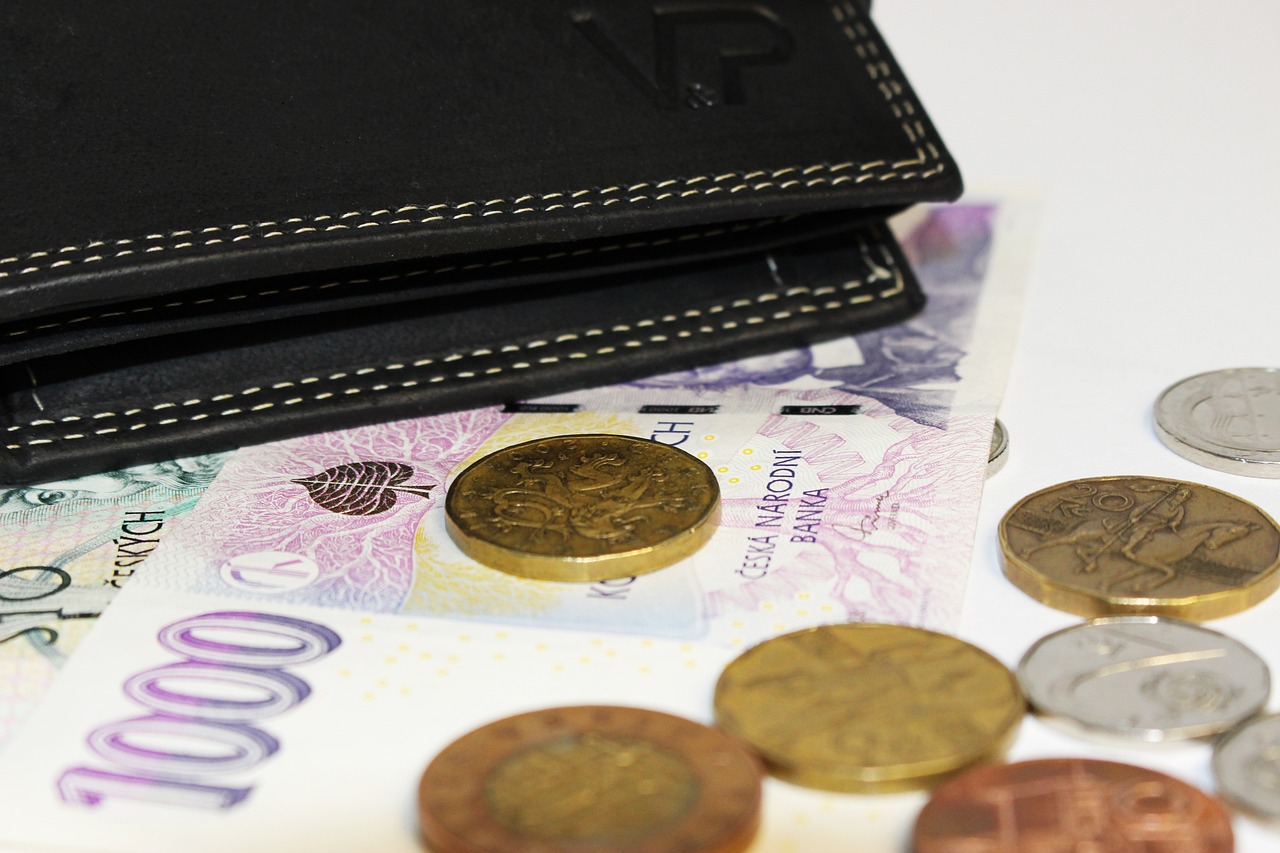
Integration with Traditional Banking
The integration of digital wallets with traditional banking systems is not just a futuristic concept; it's becoming a reality that could redefine how we interact with our finances. Imagine a world where your digital wallet seamlessly connects with your bank account, allowing you to manage your money with unprecedented ease. This integration could lead to a more streamlined financial experience for users, bridging the gap between conventional banking and the innovative world of digital currencies.
As consumers increasingly demand convenience and efficiency, banks are starting to recognize the potential of digital wallets. By integrating with these platforms, they can offer customers a more holistic approach to managing their finances. For example, users could receive instant notifications of transactions, allowing them to monitor their spending in real-time. This level of transparency can help individuals make better financial decisions and stay within their budgets.
Moreover, this integration could facilitate faster transactions. Traditional banking systems often involve delays, especially for international transfers. However, with blockchain technology powering digital wallets, transactions could be processed almost instantaneously, providing users with access to their funds whenever they need them. This is especially important in today's fast-paced world, where time is money.
Another exciting aspect of this integration is the potential for enhanced security. Digital wallets leverage blockchain's cryptographic features, making transactions not only faster but also safer. By incorporating these advanced security measures, banks can reassure customers that their funds are protected from fraud and cyber threats. In a time when data breaches are increasingly common, this added layer of security is invaluable.
However, the road to integration is not without its challenges. Both banks and digital wallet providers must navigate complex regulatory landscapes to ensure compliance while also prioritizing user privacy. It's a balancing act that requires collaboration and innovation. As this partnership evolves, we may see new financial products and services emerge that combine the best of both worlds.
Ultimately, the integration of digital wallets with traditional banking represents a transformative shift in the financial landscape. By embracing this technology, banks can not only enhance their service offerings but also attract a new generation of tech-savvy consumers who value convenience and security. As we look to the future, it's clear that the synergy between these two worlds will create exciting opportunities for all stakeholders involved.
- What are digital wallets? Digital wallets are applications that allow users to store and manage their payment information and make transactions electronically.
- How does blockchain enhance digital wallets? Blockchain provides a decentralized and secure framework for transactions, ensuring transparency and reducing fraud.
- Will digital wallets replace traditional banking? While digital wallets offer many advantages, they are more likely to complement traditional banking rather than replace it entirely.
- What challenges do digital wallets face? Key challenges include scalability, regulatory compliance, and user adoption.

Emerging Trends
The world of digital wallets is rapidly evolving, and as we look to the future, several are poised to redefine our financial interactions. One of the most exciting developments is the rise of Decentralized Finance (DeFi). DeFi platforms are creating new opportunities for users to engage in financial services without the need for traditional intermediaries. Imagine being able to lend or borrow money, earn interest on your assets, or trade cryptocurrencies all from your digital wallet, without ever stepping foot in a bank! This shift not only enhances user autonomy but also democratizes access to financial tools.
Furthermore, the advent of Non-Fungible Tokens (NFTs) is creating a buzz in the digital wallet space. NFTs are unique digital assets that represent ownership of a specific item, be it art, music, or even virtual real estate. As these tokens gain traction, digital wallets will need to adapt to support NFT transactions and storage. Users will soon have the capability to manage a diverse portfolio of assets, all within a single wallet interface. This integration is akin to having a personal museum where you can showcase your digital collectibles, making wallets not just tools for transactions but also platforms for personal expression.
Another trend to watch is the increasing focus on user experience. As competition in the digital wallet market heats up, providers are investing in intuitive designs and seamless functionality. Imagine opening your wallet app and finding everything you need at your fingertips, from transaction history to budgeting tools. Enhanced user interfaces will make it easier for individuals, regardless of their tech-savviness, to navigate their finances. This shift is critical because a user-friendly experience can significantly boost adoption rates, especially among those who are still hesitant to embrace digital finance.
Moreover, the integration of artificial intelligence (AI) into digital wallets is on the horizon. AI can analyze spending patterns, suggest budgeting strategies, and even alert users to potential fraud. Picture your wallet not just as a passive tool but as an active financial advisor that helps you make informed decisions. This capability can empower users to take control of their finances, leading to healthier financial habits and increased savings.
Lastly, as digital wallets become more commonplace, we can expect a greater emphasis on security and privacy. With the rise of cyber threats, wallet providers will need to implement advanced security measures, such as biometric authentication and enhanced encryption protocols. Users should feel confident that their financial data is protected. This focus on security is not just about preventing breaches; it’s about building trust in a digital economy where consumers are increasingly relying on technology for their financial needs.
In summary, the future of digital wallets is bright, filled with innovations that promise to enhance user experience, security, and functionality. As these trends unfold, they will transform how we perceive and interact with our finances, ultimately leading us into a more integrated and technologically advanced financial landscape.
- What is a digital wallet?
A digital wallet is an electronic device or online service that allows individuals to make electronic transactions, store their payment information, and manage their finances efficiently.
- How does blockchain enhance digital wallets?
Blockchain technology provides a secure, decentralized platform for transactions, ensuring transparency and protecting user data through cryptographic security measures.
- What are NFTs and how do they relate to digital wallets?
Non-Fungible Tokens (NFTs) are unique digital assets that can be stored and managed within digital wallets, allowing users to own and trade digital collectibles.
- Will digital wallets replace traditional banking?
While digital wallets are becoming more popular, they are likely to complement rather than completely replace traditional banking, offering users more options for managing their finances.
Frequently Asked Questions
-
What is a digital wallet?
A digital wallet is an electronic version of a physical wallet that allows you to store, send, and receive money digitally. It provides a convenient way for users to manage their finances without needing cash or traditional banking methods.
-
How does blockchain technology enhance digital wallets?
Blockchain technology enhances digital wallets by providing a secure, decentralized platform for transactions. It ensures transparency and immutability, meaning once a transaction is recorded, it cannot be altered, which builds trust among users.
-
What are smart contracts and how do they work with wallets?
Smart contracts are self-executing contracts with the terms of the agreement directly written into code. In digital wallets, they automate transactions, making processes faster and reducing the need for intermediaries, enhancing user experience.
-
What challenges do blockchain wallets face?
Blockchain wallets face several challenges, including scalability issues, regulatory hurdles, and user adoption barriers. As transaction volumes increase, maintaining efficiency and compliance while ensuring user security is crucial.
-
Will digital wallets integrate with traditional banking?
Yes, the future of digital wallets looks promising with potential integration into traditional banking systems. This could create a seamless financial experience, allowing users to easily manage funds across different platforms.
-
What are the emerging trends in digital wallets?
Emerging trends such as decentralized finance (DeFi) and non-fungible tokens (NFTs) are shaping the future of digital wallets. These innovations offer new functionalities and investment opportunities, expanding the capabilities of digital wallets.



















